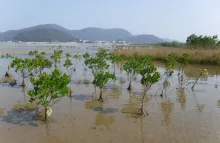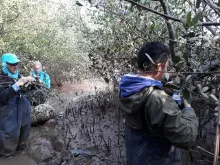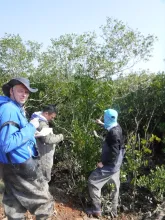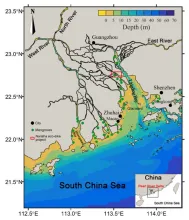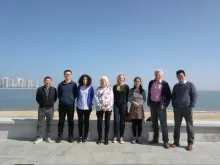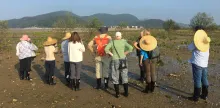This project aims to develop process-based understanding and predictive models of ecosystem size requirements and how to create ecosystems for coastal defence, using the world’s largest urban area, the Pearl River Delta (PRD) in China, as a model system. Delta-scale mangrove area monitoring and hydrodynamic modelling will be conducted to study recent wetland area changes and estimate the optimisation of ecosystem spaces for defence, under contrasting scenarios of climate change and land-reclamation. This large-scaled study will also provide underpinning boundary conditions for local-scale experiments and modelling. A set of experiments using novel instruments will be conducted to improve our insights into the processes influencing mangrove resilience and propagation. Innovative measures of using dredged materials and oyster reefs to facilitate mangrove establishment will also be tested experimentally. Local-scale models will incorporate the new experimental knowledge to predict mangrove bio-geomorphic dynamics and provide guidelines for management.
The developed models and knowledge will be directly applied in the design of a pilot eco-dike project due to be constructed, in collaboration with our project partners. We will consider how to address resilient urban planning and management, in terms of combining spatial planning and disaster management by optimising land use, institutions and mechanisms for more sustainable urbanisation, exploring eco-dynamic design options to provide opportunities for nature as part of the urban development processes.




